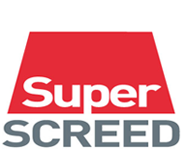
Frequently asked questions
Q. How much does our screed cost per square metre and is it expensive?
A. The cost per square metre will depend on several factors. For example larger areas have a more efficient labour cost per metre, compared to smaller areas.
Our team of screeders are employed per day, so whether it is for an area of say 20 square metres or 100 square metres, our labour costs are likely to be the same.
Super Screed prices are very competitive and we receive a high percentage of recommendations and repeat business.
Q. How far do you travel?
A. We are based in Poole in Dorset and we travel a 100 mile radius and sometimes a little further.
Q. How soon can I walk on the screed?
A. It will depend on which screed.
Liquid screed can be walked upon usually 24-48 hours later (depending on site climate conditions and air circulation)
Rapid drying modified cement can be walked upon after just 8 hours.
Traditional sand and cement screeds will need several days before being walked upon.
Q. Which screed is best used with underfloor heating?
A. Liquid screed has twice the thermal conductivity as a traditional screed. Laid at the correct thickness, typically 50-55mm they are best with underfloor heating. The material fully encompasses the heating pipes leaving few air gaps. A thinner screed also allows for a faster heat up time, saving on energy bills.
Q. With an underfloor heating screed, when can I lay my floor tiles?
A. All screeds should be tested for moisture content before laying floor tiles. You will have to commision the heating system prior to laying any vapour sensitive floor coverings, like floor tiles.
Liquid screeds typically take 1 day per 1mm to dry, up to a thickness of 40mm and then an additional 2mm per day from 40mm onwards. This also applies to a traditional sand and cement screed. Information on how to reduce the drying times by up to 50% with forced drying after 7 days.
Q. What average thickness do you suggest for liquid screed, if laid on top of underfloor heating pipes?
A. The underfloor heating pipes will normally require a minimum of 30mm coverage. We would aim to lay the screed at a thickness of 50-55mm. It will depend if the base is good and flat.
Q. What will the average thickness of a liquid screed be without any underfloor heating?
A. It will depend on whether the screed is for domestic or commercial premises.
For domestic premises it can generally be laid as thin as 30mm and for commercial use, 40mm.
Q. Do we have screeds for the outdoors, such as for balconies or swimming pools?
A. Yes our rapid drying modified cement screed.
Q. I have been told that due to a narrow site access the vehicles that carry liquid screed wouldn’t be able to access the site and so liquid screed is not an option. Is this true?
A. We use traditional cement trucks to deliver our liquid screed as long as you have had one of these access should be no problem. Please call if you have any queries.

